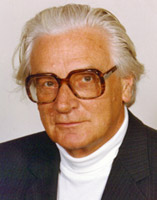Konrad Zuse |
|
|
Konrad Zuse (22 June 1910 – 18 December 1995) was a German inventor and computer pioneer, known mostly for developing a series of pioneering computational systems. His Z3 was the first programmable computer, developed in 1941. Other firsts include what is considered the first high-level programming language in 1945, and the first commercial computer, the Z4, in 1945. In 1969, he wrote the book “Rechnender Raum,” known in English as “Calculating Space,” which was the pioneering work in the field of digital physics.
In that book Zuse was the first to posit that the universe may be digital and follow the rules of cellular automata. He explores a variety of one-dimensional and two-dimensional automata using pressure and velocity equations and derives propagation rules in various directions, demonstrating how they can resemble observational reality. It is interesting to note that he identified that a grid structure would establish preferred directions, which is exactly the characteristic that experimental physicists are investigating today. In Zuse’s time, such experiments were certainly not considered feasible, so this is certainly a testament to his far range thinking. |
He correctly notes that if the grid resolution was considerably smaller than commonly measured lengths (he references 1E-13 cm), one would not notice the effect.
The Cellular Automata view effectively relegates the universe to the status of a huge deterministic machine. The elementary particles of which our bodies, brains, and cells consist of merely follow the state transition rules of cellular automata. There appears to be no room for free will or influence through intent in such a theory. In this model, there need be no external “designer” of the system as the universe itself is the computer.
External links: |
|
Z3 Replica - Deutsches Museum, Munich |
|
| More Philosophers | |


